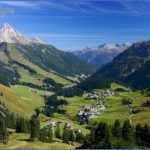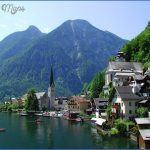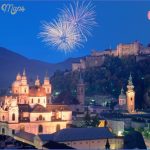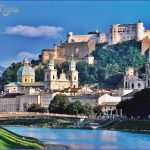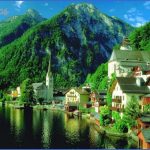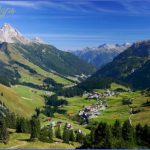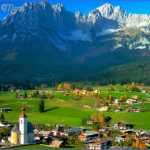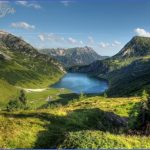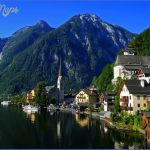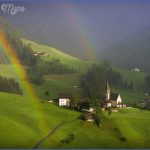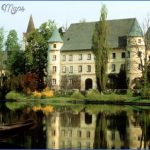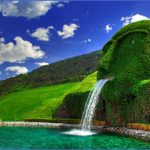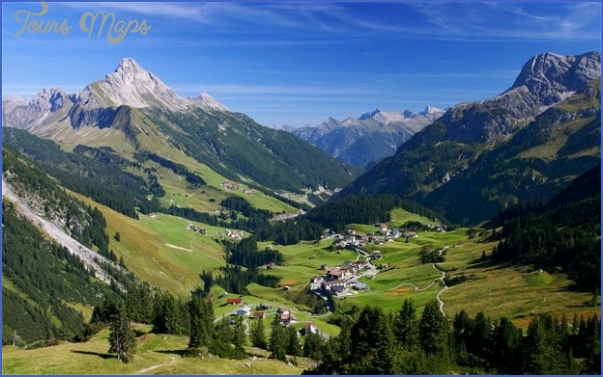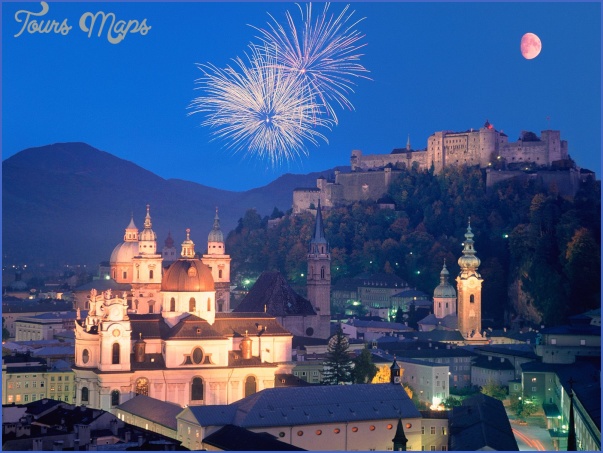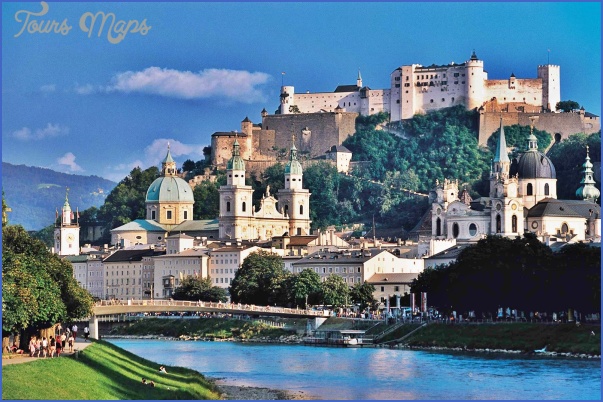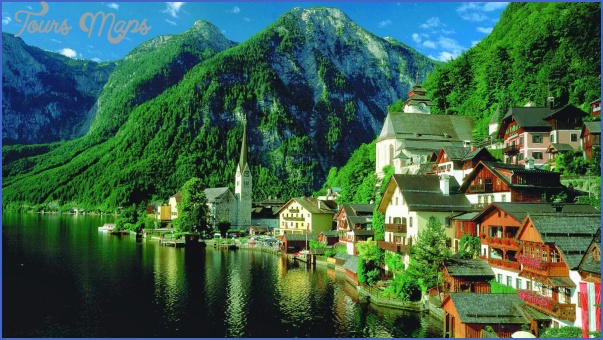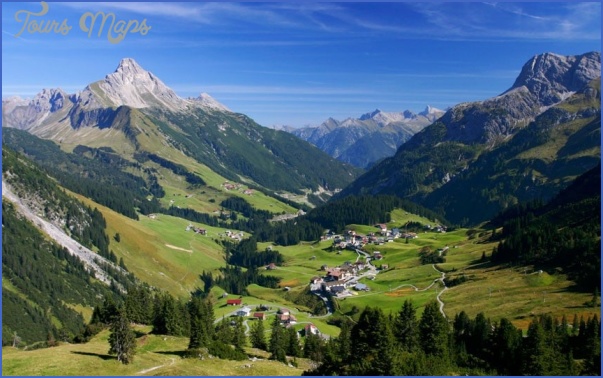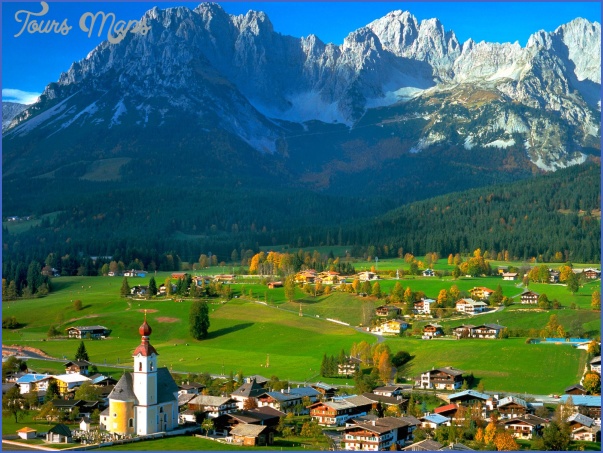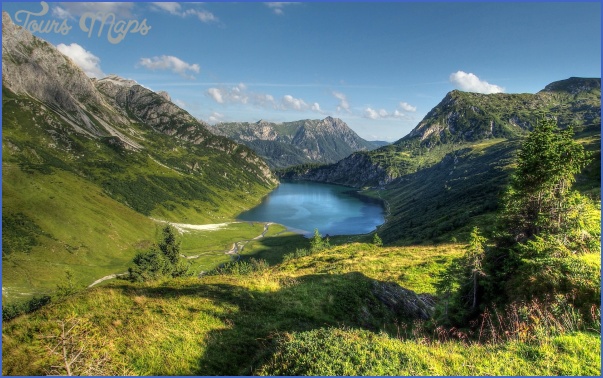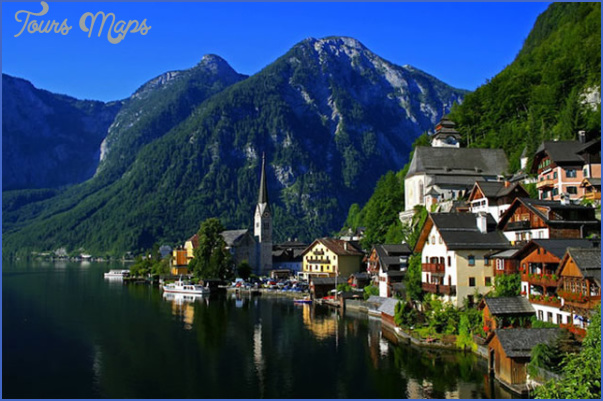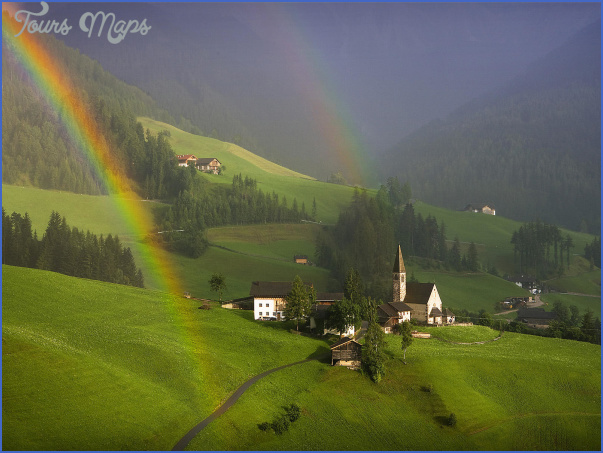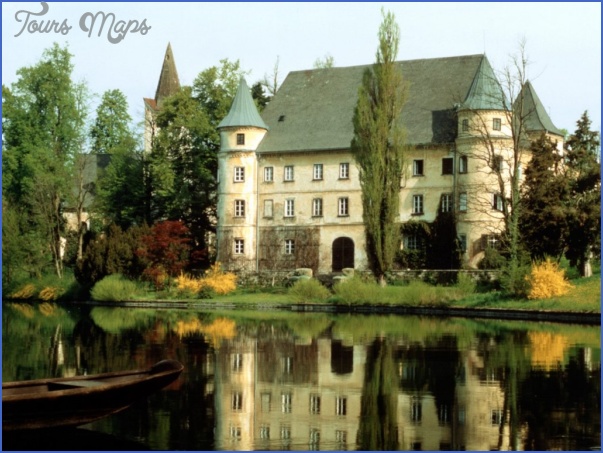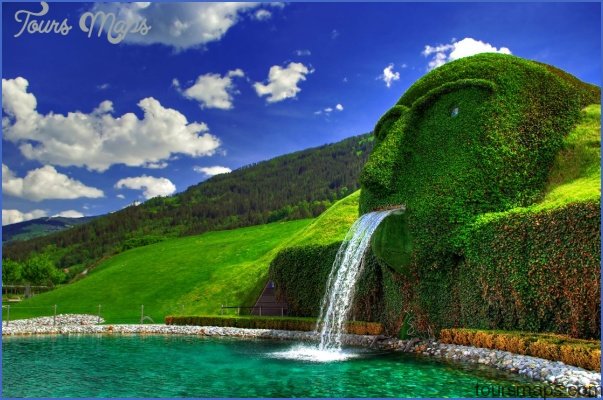Austria is a precious little country where a good share of the farmers turn innkeeper for the summer. Almost $6 billion a year is derived from tourism. The sign zimmer frei (rooms for rent) is seen on homes in all of the scenic areas, and most of Austria is highly scenic scenic in summer as a place to auto, hike, and sightsee; scenic in winter as a ski center. It is also a cultural bonanza, especially Innsbruck, Salzburg, and Vienna. Give Austrians high marks for cleanliness, punctuality and hard work. Give all those Austrian housewives who take in guests a round of applause for the ubiquitous flower boxes full of blooming geraniums.
Three-fourths of Austria is mountainous, much of it kept as Alpine meadows. Agriculture is possible at much higher elevations than normal because of the warm, dry wind from the south called the foehn. Average temperature for January is twenty-seven degrees; for June it is about sixty-seven degrees. Scenic finger lakes lie to the north and east of Salzburg. Lake Constance is shared with Switzerland.
The Germans are well aware of Austria’s attractions and pour south over the German border by the thousands. They should! The food is close to being German with beer, sausages, wiener schnitzel, potatoes. The wine, too, is close to the light whites of Germany. A night in Grindzig, on the outskirts of Vienna, with wine in mugs, rotisseried chicken, and violin and accordian music, is a night to remember. Each year about 400,000 Americans make the journey to Austria.
Vienna moves in three-quarter time. The violins tell of the beautiful blue Danube, unfortunately not blue any more. Nevertheless, the inner city is one of the really interesting living museums of our day. In the very center is St. Stephens Cathedral, sitting as the hub of a wheel, with the principal streets radiating out. The Hofburg Palace was the center of the Austro-Hungarian Empire. Until 1918 it was the administrative center for the fifty million people who made up the empire. Today its twenty-six hundred rooms are much alive as offices for national Austria, reduced to some seven million.
Tourists line up to see the crown jewels. Another line forms to see the beautiful Lip-pizaner horses of the Spanish Riding School, the most impressive such academy in the world.
Three imperial palaces left over from the days of empire grace Vienna. In addition to the Hofburg in the center of the city, there is Schonnbrunn, the purest realization of the melody of Austrian baroque. About half the size of Hofburg, it has only 1,441 rooms, and sits on the outskirts of Vienna. Empress Maria Theresa, who built the palace, had sixteen children and each had to have his or her own princely suite and own small court. The Belvedere Palace, originally built for Prince Eugene of Savoy, military hero in battles against the Turks, is the third royal palace later a residence of the Archduke Franz Joseph.
The Wienerwald, the Vienna Woods, is a resplendent green area of trees and hills around Vienna, stretching from the southwest to the north of the Danube. It is a greenbelt similar to London’s greenbelt. Half-day tours, originating at the State Opera House, take you outside Vienna to the old Roman town of Baden and the Hinterbruhl, also to an old abbey, then to Mayerling where the son of the last emperor shot his mistress, then himself. (The hunting lodge where the suicide took place has been razed.)
Fifty miles from the Opera House is the Seagrotte, the old gypsum mine, so deep and large that during World War II it was used as a subterranean airplane factory by the Germans. Today it is a tourist attraction where at 180 feet below the surface is Europe’s largest underground lake, 6,200 square feet in area, thirty-five feet at its deepest. Here the visitor can take a boat ride. The warmest part of the mine is fifty-five degrees.
Vienna is a city of streetcar travel; excellent streetcars cover the city. Visitors to Vienna should know that the streetcars often run in the opposite direction to automobile traffic in streets with one-way signs prominently displayed. Look both to right and left before crossing. Several tourists have been killed by not being aware of this. A visit to yesterday can be taken via antique streetcar on Sunday mornings, a trip that ends up at The Prater, one of the first large amusement parks in Europe.
Austria Photo Gallery
Maybe You Like Them Too
- Map of Vienna State Opera Wiener Staatsoper
- Australia
- Austria Metro Map
- Austria Map
- Austria Subway Map

